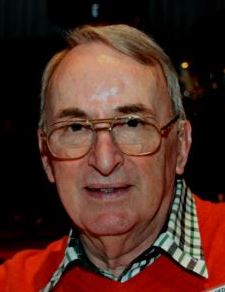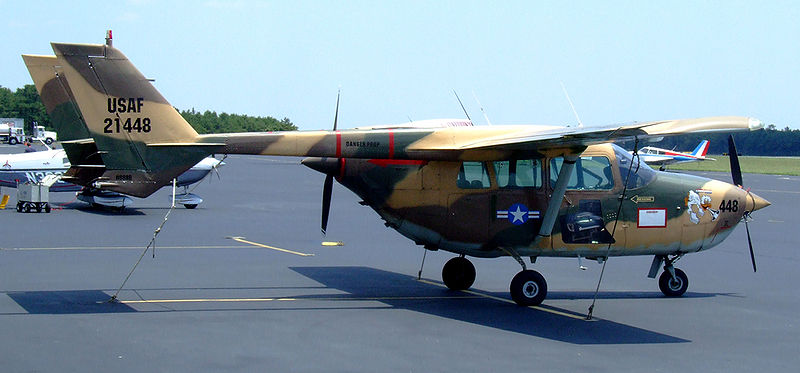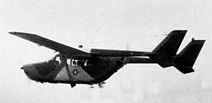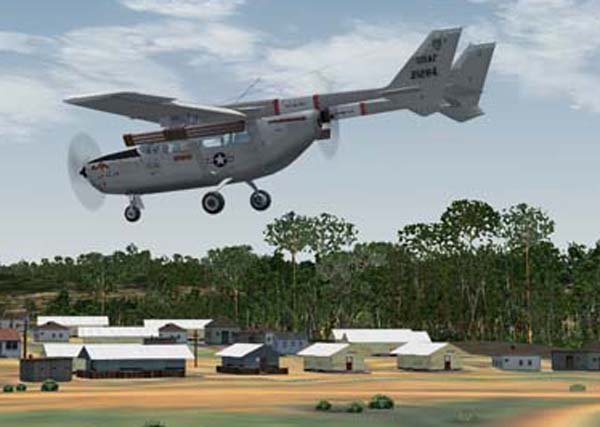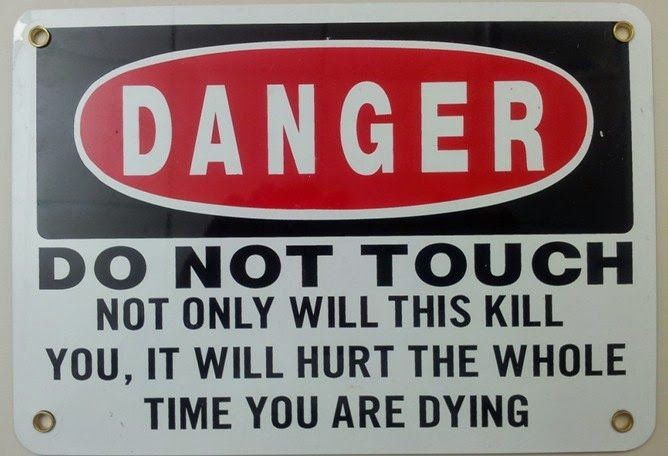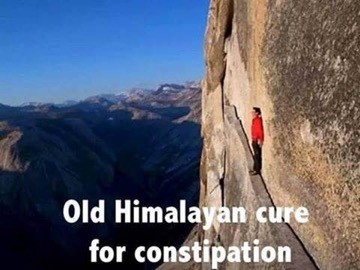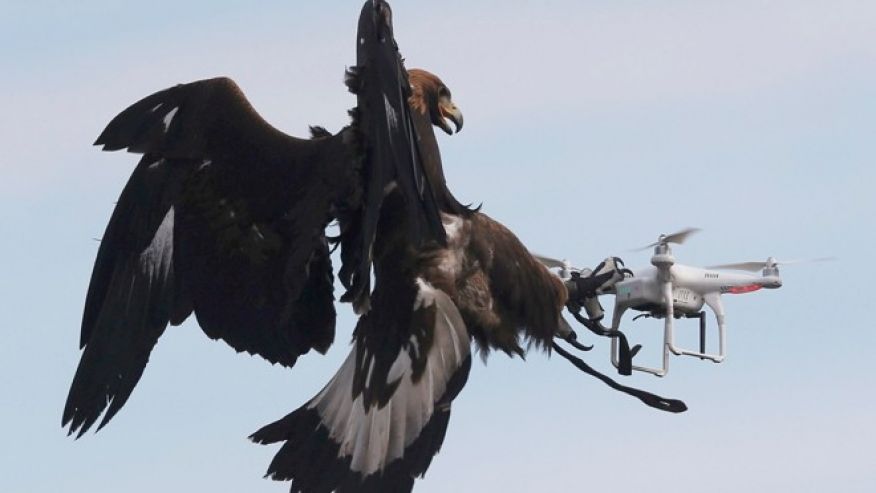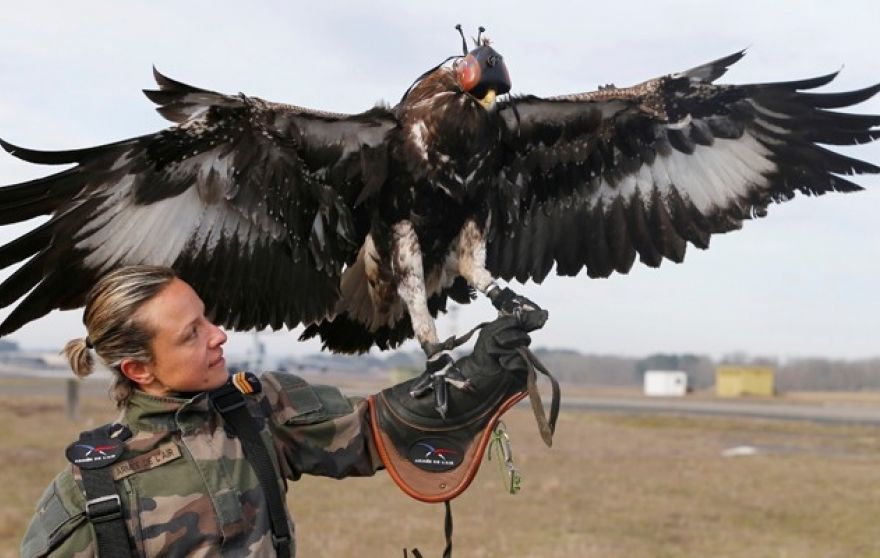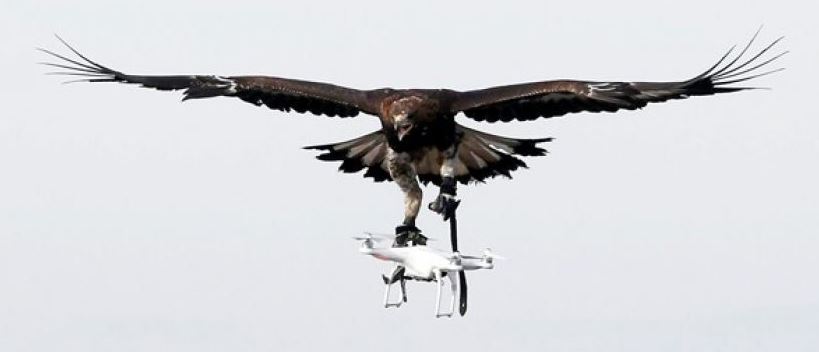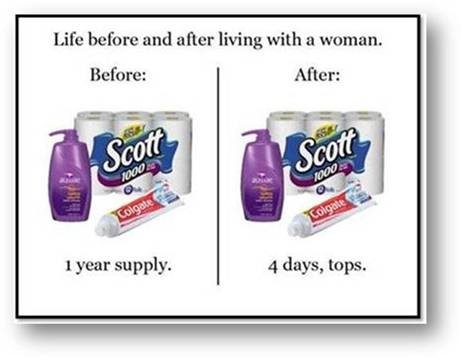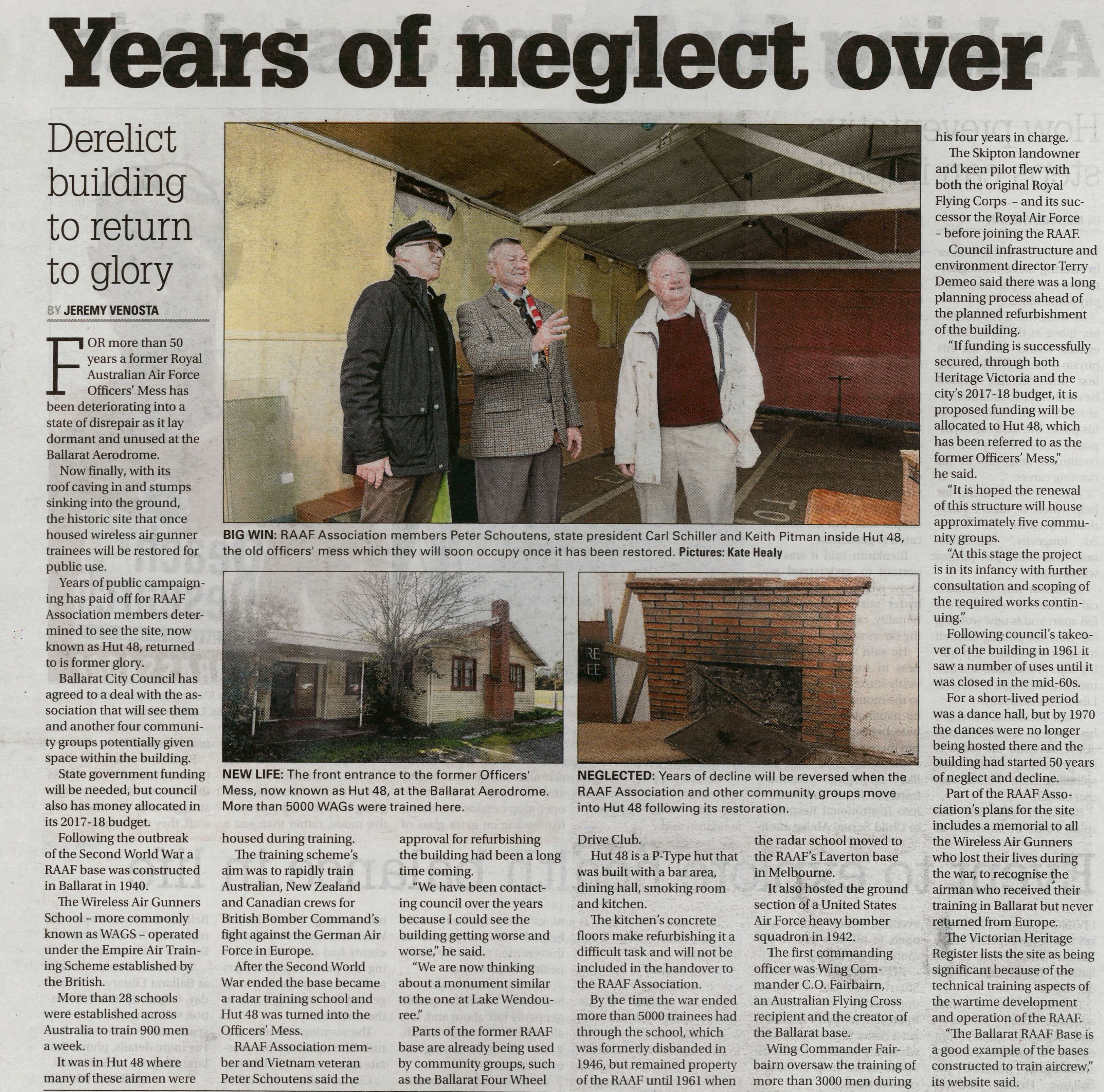|
|
||
|
||
|
Privacy Policy | Editorial Policy | Profit Policy | Join the Association | List of Members | Contact us | Index | Links |
||
|
Back Go to page: 1 2 3 4 5 6 7 8 9 10 11 12 13 14 15 16 17 18 19 20 Forward
|
||
|
|
||
|
Pedro’s Patter.
Excerpt from Jeff’s book – Wallaby Airlines.
Crash at Ba To Late August 1966
‘The Danang Wallaby has pranged!’
It was late on a Tuesday when we heard about it. The news sent shock waves around the squadron, jolting me out of late afternoon lethargy after an uninspiring day down the Delta. Operating as we did into substandard strips in marginally secure areas in bad weather, disaster was closer than most of us would admit. One gradually acquired a facade of nonchalance, which finally became almost a state of mind. An event such as this brought the reality of our situation abruptly into focus, along with unwelcome sensations of vulnerability. When pilots regularly operate near their own and their aircraft’s limits, it is only a matter of time before an accident occurs.
Ba To from the Air.
The crash site was Ba To, an isolated government outpost in a strip of coastal jungle south of Danang. Bar conversations, usually of a less serious nature, were interlaced with speculation, particularly from those who had seen the camp, which was near a hotbed of VC activity. We all wanted more details about how aircraft and crew came to grief so we could avoid getting into a similar situation ourselves.
The squadron hierarchy were in a huddle getting details of the prang and organising a recovery operation. Later that evening, the CO finally appeared to tell us that the crew was alive and well, but the aircraft was too damaged to fly out. His main worry was keeping it intact until a repair team could be sent in to patch it up enough to ferry out. If VC mortars hidden in the surrounding jungle found it first, there would be nothing left to repair.
Early next day, John Harris and the CO headed north to pick up the stranded crew and drop in a maintenance team under the command of Wally Solomons, our engineering officer. Unfortunately, they were unable to land as the crashed aircraft was blocking the strip, and they had to continue to Quang Ngai. When he and his team finally arrived in a US Army chopper, Wally assessed that the damaged aircraft could be repaired and flown out, even though the job would have to be done under a scorching tropical sun in the dirt parking ramp beside the strip using little else but muscle power.
The following Monday another Wallaby, crewed by John Harris and myself, again with Bugs Rose and Blue Campbell, departed for Danang to take over the detachment prematurely terminated by the prang. We set off unsure of the duration of this detachment since the pressure put on the flying program by the loss of the crashed aircraft could well require us to be recalled for more important tasks.
|
||
|
|
||
|
Danang is the second largest city in South Vietnam, and the major port for the northern provinces. It was also home to the largest fighter and bomber base outside Saigon, from which were mounted round-the-clock strikes against targets not only in South Vietnam, but north of the Demilitarized Zone (DMZ) too.
The DMZ was an area five kilometres (2.7 nautical miles) either side of the Ben Hai river, which divided Vietnam into North and South under the 1954 Geneva Agreement. Because of Danang’s strategic importance and position close to the DMZ, it was regularly threatened with attack by subversion and sabotage, or more directly with mortar and rockets. At this time, it was well protected by a US Marine Division, and crack units of the Army of the Republic of Vietnam (ARVN).
On this detachment, as at Nha Trang, we would be flying Special Forces resupply missions, but this time in the I Corps Military Region for which Danang was the major supply centre. I was glad to be getting away from Vung Tau again. August was almost over, and I was well and truly used to the local mail run missions. Flying out of Vung Tau seemed dull and pedestrian after the Nha Trang detachment, and included extras such as morning briefing with No 9 Squadron. Prior to commencing operations in support of the Task Force, our pre-flight activities were concentrated on the mission at hand. These days we got body count, along with weather and artillery.
The 9 Sqn choppers were currently operating at full blast in support of the Task Force, which was consolidating its position after the successful battle of Long Tan. The briefing officer gave his body count numbers triumphantly, like an accountant reviewing an audit. I found it difficult to share his enthusiasm, or to believe all his figures. American body count figures released to the media were even more amazing. At the rate the allies were supposed to be wiping the VC out, the war would be over in no time.
Danang is 400 miles from Vung Tau, some three hours flying time in a Caribou. It is located on a widened section of the coastal plain, surrounded by marshy flats and meandering streams.
The Wallaby looked out of place among scores of F-4s, F-105s, B-57s, F-102s and other ‘hot ships’ as we taxied in off the 10,000-foot concrete runway. We parked dwarf-like, beside a giant USAF C-133 Cargomaster from the States. The Transport Movement Control (TMC) crew was full of commiseration about the pranged Wallaby, and anxious about the effect its loss might have on future detachments. Our squadron provided the only Caribou regularly at its disposal, and many strips in the I Corps area were unsuitable for larger aircraft. TMC planned to send us shuttling down the coast for the rest of the day to Tien Phuoc, a newly established camp. The advisers there were living in tents, and anxious to start work on more permanent accommodation with the building materials we were tasked to fly in to them.
John and I soon discovered that the Danang TMC crew was not as professional or reliable as were their colleagues at Nha Trang. Taxiing out with our first load, I noticed that the Wallaby’s nose wheel steering seemed very heavy, making the aircraft hard to turn. Our load was a stack of galvanised roofing iron. I called up Bugs Rose on the intercom. ‘Bugs, the aircraft feels really strange, very heavy on the steering. Are you sure we got the right load?’ Bugs counted the sheets. ‘TMC’s given us a double load’, he said. We were grossly overweight. We might have got off the ground but an engine failure after take-off would have put us straight into the rice paddies at the end of the runway. We turned back to rectify the mistake.
Tien Phuoc Strip.
Tien Phuoc is in an extremely narrow valley in a clearing hacked out of virgin jungle. Earlier in the morning, it had been blanketed with fog. When we arrived, the fog had lifted to become a thin, low layer of broken cloud. Although we could see the camp from directly overhead, there was too much low cloud to make a normal circuit and landing and not enough room to manoeuvre in the narrow valley to get under the cloud near the camp. Yet when we descended under the cloud layer where it stopped five to ten miles down the valley, we lost our bearings among featureless jungle. John hit upon a smart idea. At his suggestion, we flew over the camp and away down the valley on a timed run. At the edge of the cloud, we turned onto a reciprocal heading and commenced timing. Bucketing along between the treetops and the base of the cloud with nothing visible ahead but more jungle, I wondered whether this unconventional procedure was really such a good idea. But all of a sudden, the camp in its clearing appeared, and after a quick bit of maneuvering we were on the ground.
|
||
|
|
||
|
Tien Phuoc Special Forces Camp.
As far as the Special Forces team was concerned, our load of galvanised iron might have been gold bullion. They showered praise on us, and were even more exuberant when told that we would be back with cement, wire netting and sandbags. We were glad we had made the effort to get in, even though our unorthodox method would not have fitted the rigid operational environment back home.
After a busy day, which ended when darkness finally overtook us, we discovered one frustration of the Danang detachment. In contrast to the familiarity and semi-permanence of our detachment at Nha Trang with its unofficial vehicle and permanent allocation of quarters, here we had to rely on USAF transport, and fossick around at the end of the day looking for bedding and a place to put it. Not belonging to a regular unit here no one seemed to know what to do with us, or to want to make a decision about where to put us, even though we had put in a full day’s flying for them. In desperation, we eventually dumped our gear on two unoccupied beds and hoped it would still be there each day when we returned from flying.
In the USAF Officers’ Club the pilots were initially friendly and interested, but soon lapsed into the universal fighter pilot game of manual aerobatics. This game, which can be played by any number, consists of waving the hands around in an unusual manner while describing some aerial manoeuvre, such as a dive-bombing attack. Finding ourselves odd men out and somewhat sickened by a sadistic turn the conversation was taking, we soon left them and retired to a quiet corner with our beers and barbecued steaks. The beefsteaks here were regularly flown in fresh from the States, making these pilots the best fed in the country. They were the size of a small roast of beef at home. I felt a twinge of jealousy when I thought of the frozen ham steaks and lima beans at Vung Tau, but had to admit that pilots on night bombing sorties over North Vietnam probably deserved a bit extra.
After our five-star meals and a few drinks we retraced our steps to find our beds, with our personal gear still intact. A fitful night followed, broken by the irregular roar of jet afterburners as aircraft took off on night or early morning strikes. In the morning, after the usual breakfast of fried ham and eggs with maple syrup, we set off on the first of the next day’s missions, a run to Ba To, scene of the Wallaby prang. We now knew that the cause of the accident was officially that scourge of flight crew everywhere—pilot error. In other words, an error of judgment. I was interested to see what sort of strip had put this blemish on the reputation of one of the squadron’s more experienced pilots.
Ba To lies ten miles inland in a thin wedge of jungle sandwiched between rising terrain and the coast. The dirt runway is 1400 feet from end to end with, as the Aerodrome Directory warned, a ‘fifty foot drop-off both ends’. The drop-offs were not inclines, but sheer cliffs, making a guaranteed touchdown after the threshold much more important than other strips with tapered overruns. Our unfortunate colleague had aimed a little too close to the approach end. The Wallaby’s port undercarriage leg had clipped the edge of the drop-off, and collapsed, allowing the aircraft to come down onto the left propeller and wing as it slewed round to an untidy halt.
As he set up the approach, I am sure John was thinking, as I was, that it could have happened to any one of us. We climbed out of our aircraft and walked over to talk to Wally Solomons and his team. Wally, indistinguishable from his men in boots, shorts and ‘Hat, Floppy, Ridiculous’, sunburnt and sweating after toiling in the open, brought us up to date on the repair operation.
The aircraft had pranged a week ago. Wally had been one of the first on the scene. The repair job he faced must have been rather daunting, even to an engineer of his experience. The unhappy Wallaby had come to rest in a muddy depression across the gateway to the Special Forces camp, perilously close to a line of defensive Claymore mines protecting the camp’s entrance. In a strange twist of fate the port wing was resting on an old Caribou propeller and reduction gearing, debris from a previous accident. The port undercarriage was folded forward, as if in a semi-retracted position. Both nose gear tyres were flat and torn by the barbed wire entanglement in which they had come to rest. The starboard undercarriage was almost undamaged, but the wing had obviously whipped viciously on impact, as the control surfaces were broken and hanging, torn and buckled, from their attachment points. The port propeller was buckled due to ground contact, and the engine was cracked completely around the rear end of the reduction gear case. The port flaps, wing and rear of the engine nacelle were bent, buckled and torn by contact with the ground, the collapsed undercarriage and the old Caribou propeller. The radio antennae under the rear end of the fuselage had been torn off as the aircraft skidded over metal stakes and barbed wire.
|
||
|
|
||
|
Crash repairs at Ba To.
A replacement wing, engine, propeller and undercarriage assembly would be required. These items, and all the men and equipment required for the repair operation, would have to be flown in to Ba To, and before this could happen, the wreck had to be moved clear of the strip. Wally arranged another helicopter mission that afternoon to bring in five of his airmen, a nose wheel jack and other tools. After jacking up the nose, they cut lengths of timber ‘borrowed’ from the Special Forces camp and used it to shore up the nose wheel assembly. Then they used the jack on the port wing, raising it until they reached the extension limit of the jack, supporting the wing with a pad of sandbags from the camp bunkers while they relocated the jack on a platform of timber so that the wing could be raised higher. When they had enough clearance, they cut more timber to make temporary braces for the damaged undercarriage.
By late afternoon, they were ready to drag the Wallaby back into the parking ramp using the only available vehicle, a two-and-a-half tonne truck with no brakes, and all available manpower. By evening, they were ready to listen to a briefing on bunker drill from the camp commander before settling down to an uneasy night on the edge of an unfriendly jungle. Early Thursday morning, Wally began a more detailed inspection. He decided to repair the aircraft sufficiently so that it could be flown back to Vung Tau with the gear down.
With the strip now open, arrangements were made to bring in by Wallaby more tools and spares, including main gear jacks, an engine and propeller. The largest item of equipment, a wing taken from the wreck of a US Army Caribou at Vung Tau, would have to be brought in by Chinook helicopter. Thursday and Friday were spent stripping damaged components from the aircraft, such as flaps and the left-hand propeller, and preparing the engine for removal. After lunch Friday, John Harris and the CO had duly arrived with replacement flaps and undercarriage components, and the much-needed main undercarriage jacks. Then commenced the tedious business of raising the aircraft even higher on 44-gallon drums and sandbags, so that the jacks could be put in position.
By mid-afternoon, the aircraft was securely jacked and tied down, and another Wallaby arrived with a propeller and engine. By nightfall, the port undercarriage had been replaced and chained in the down position. On Saturday, the port engine was changed, and the wing prepared for removal first thing next morning. The replacement wing arrived by Chinook at 1400 hours on Sunday. All available manpower, including some curious Vietnamese civilians who, in Wally’s words, ‘happened to be in the wrong place at the wrong time’, was used to lift the wing into position, again using 44-gallon drums topped with sandbags. The old wing was now removed.
On Monday, the new wing was lifted into place using a set of hydraulic steps borrowed from Qui Nhon, not without incident since the steps failed halfway, lowering the wing back to the ground. However, after repairs to the steps had been made, the wing was raised again and bolted in place. What we now saw was the almost completed aircraft, awaiting only transfer of control cables and fuel tanks from the damaged wing, and installation of flaps and ailerons, before it could be flown out. Wally’s main worry so far had not been the repair work, but the possibility of mortar attack from the surrounding jungle. He was sure the jungle grapevine would have alerted the VC to the repair activities going on. As it was someone had set off a Claymore mine on the camp perimeter on the Thursday night, while on Monday night mortars and flares were fired to counter VC penetration of an outer bunker. We knew Wally and his team would be glad to see the last of Ba To.
When we returned on Wednesday, repairs had been completed without interference from the VC, and the patched up aircraft was ready to be flown out. The CO and Blue had arrived and were preparing for departure. The recovery of the badly damaged Wallaby had taken just over a week. By the time we had unloaded our aircraft, they were safely airborne and heading for home. I must say, I felt proud to belong to an outfit that could go to such lengths to keep its aircraft flying.
Twenty miles north of Ba To, and crowded by surrounding mountains, a river and the coast, was a picture postcard town called Tra Bong. This sleepy-looking settlement nestled at the foot of jungle-covered hills, which completely cut it off from the interior. Many of the buildings were whitewashed stone with terracotta roofs ravaged by weather and time. The grandest of them all was the Catholic Church, with its belltower and a statue in front, looking down protectively from its prominent position above the town. The poorest were thatched-roofed huts owned by peasant farmers.
|
||
|
|
||
|
In the background trickled a waterfall, a silvery twinkle against the green mystery of the jungle. The whole scene looked more Mediterranean than Vietnamese. The airstrip had a road running parallel to it, made of the same laterite (crushed gravel) material. Tra Bong airfield was located on the only flat area around, among rice paddies near the river. The paddies at this time of year were an unbelievable green, with a telltale sparkle of water shimmering through the carpet of young rice shoots.
|
||
|
|
||
|
A painted stone arch and brush fence separated the village from the strip. The arch proudly bore the words ‘Tra Bong, Cong Hua Viet Nam’ (Tra Bong, Republic of Vietnam) emblazoned across it. Tra Bong was a typical Type 1 Caribou airfield. The strip was only 1000 feet long, just about the minimum for a Caribou. It was also narrow, and had no parking ramp. After landing, John stopped the aircraft on the runway, and in front of the arch, for unloading. Dozens of laughing kids appeared, shouting the now familiar ‘Hi, Uc Dai Loi’. We fossicked around and found some sweets for them. The kids here were like kids anywhere, inquisitive, noisy and likeable. I wondered how they would grow up in this backward, isolated outpost, which was as far from Saigon as it was from Hanoi.
The villagers, though lowlanders not Montagnards, were very
unsophisticated and unused to aircraft. The unloading team,
jabbering, gesticulating and giggling like the many onlookers,
stumbled about ineffectually. A heavy pallet dropped to the ground
with a crash. A bag of rice was torn open spilling all over the
aircraft floor. Finally, in their own bumbling way and,
miraculously, without injury, these earnest but clumsy rural
villagers removed all our cargo, and
We spent Thursday and Friday shuttling to Ba To and Tra Bong again, and to An Hoa and Quang Ngai, both United States Marine Corps (USMC) bases. Arriving at Quang Ngai in the middle of the day, we found the temperature and humidity almost unbearable. I had started the day feeling rather seedy, and almost passed out during unloading, even though I sat in the shade under the aircraft wing. Although we usually had a scratch lunch on the run, on this occasion I readily accepted the unloading team’s offer of lunch at the Marines’ Club. It was a half-hour drive from the airfield to the Marine base, located on a hill overlooking the town. Our driver was a black staff sergeant. I had already met many black Americans in day-to-day operations, which was not surprising since I had been told that 20 per cent of personnel in the US armed forces were blacks, as against 10 per cent in the overall population of the USA. It was more like 30 per cent serving in Vietnam.
The sergeant spoke of the Marine Corps as one would of a benevolent relative. It had given him an education, he said, looked after him well and provided for his family. As this was his second tour, he had obviously repaid his benefactor handsomely. He made no mention of racial prejudice, which was quite obvious in a few isolated camps where, significantly, there were no blacks. In those camps we had noticed racial prejudice of a particularly nasty kind. I recall one conversation which began by congratulating us on our ‘nigger policy’, particularly the ‘Tasmanian episode’. This seemed to be the only bit of Australian history known to some Americans. I know Australia is not completely free of racism, but I believe most of us are willing to give everyone a fair go, regardless of race.
Quang Ngai had a down at heel appearance, perhaps because of its location in the foothills where civilisation seemed to have scarcely encroached, or perhaps because of its large refugee population. Even though it was a large town, many of the very small houses had straw mat roofs and mud walls, like the peasant’s houses in the Delta. Small children played naked in the dust. Outside one house a young girl in the universal black pants and white top pumped up her bicycle tyres. An old lady staggered down the road, her back bent with twin coolie loads of vegetables for the market, taking mincing steps to ease the strain.
On the bridge, a young boy urinated in a carefree manner into the river. On the hill was a half-finished church, scaffolding still in place, begun during Diem’s rule but never completed. Our driver told us that the shell accommodated a hundred refugee families. I cannot remember much about the Marines’ Club except that the people we met were friendly and courteous, and the meal was better than our usual fare.
On Saturday afternoon, it was time to head for home base again. It had been an interesting detachment, but the efficiency of cargo handling in Danang did not match Nha Trang. Our relations with our American allies had been cordial, but it was hard not to be irritated by the impression they gave that whatever they did for us came under some kind of aid plan when, in fact, we were paying our way under contractual arrangements—the ‘country cousin’ syndrome.
Our passengers for the return flight were a young Vietnamese lieutenant and his three sons. I tried talking to him in French, but he did not seem to understand. Perhaps my schoolboy French was a bit rusty. It was rather frustrating knowing no Vietnamese. This pointed up the irony of our situation here. The Americans and their allies were in the country in such numbers that the Vietnamese must have felt like foreigners in their own land. Their thoughts and feelings were lost in the language barrier, our only communication with them being the one-way gobbledegook we spoke to our employees, shopkeepers and bargirls
Sign on a shop door.
|
||
|
Sign on a shop door.
|
||
|
|
||
|
The Canberra.
In September 1960, three Canberras departed Amberley and flew to Nigeria for Independence Day celebrations. Nigeria gained its independence from Britain on the 1st October 1960 but remained a Commonwealth Realm with the UK Monarch as its titular head of state. In hind-sight, it was the worst thing they could have done, shortly after gaining its independence, the country suffered a series of military coups with huge loss of life.
In 1960, the aircraft flew via the USA, Bermuda, Azores and Malta to Nigeria. They returned to Australia via Entebbe, Aden, Gan (Maldive Islands), Cocos Islands and Perth. Communications and weather were the biggest problems faced throughout flight.
The Australian War Memorial has put together a video of the Canberras leaving Amberley, you can see it below. |
||
|
|
||
|
|
||
|
A wealthy Arab Sheik was admitted to hospital for heart surgery, but prior to the surgery, the doctors needed to store his type of blood in case the need arose. As the gentleman had a rare type of blood, it couldn't be found locally, so, the call went out. Finally a Scotsman was located who had a similar blood type. The Scot willingly donated his blood for the Arab. After the surgery, the Arab sent the Scotsman in appreciation for giving his blood, a new BMW, 5 carats of diamonds, and $50,000 US dollars. A couple of days later, once again, the Arab had to go through a corrective surgery. The hospital telephoned the Scotsman who was more than happy to donate more of his blood again. After the second surgery, the Arab sent the Scotsman a thank-you card and a box of Black Magic Chocolates. The Scotsman was shocked that the Arab did not reciprocate his kind gesture as he had before. He phoned the Arab and asked him: "I thought you would be generous again, that you would give me another BMW, diamonds and money ... but you only gave me a thank-you card and a box of chocolates."
To this the Arab replied: "Aye laddie, but I have Scottish blood in ma veins now".
|
||
|
How did the Cessna 337’s (O-2's) get to Viet Nam.
It's 1967 or maybe early 1968, and the Air Force has bought a bunch of Cessna Super Skymasters (push pulls) and called them O-2s. The Cessna factory at Wichita, Kansas is pumping them out at a pretty good clip and the USAF’s problem is to figure out how to get them to Vietnam where they are needed.
The choices were:
1. Fly them to the West coast and turn them over to the Army for transport by cargo ship. 2. Take the wings off them and stuff them three at a time into the belly of C-124s and transport them over. 3. Fly them over under their own power with no C-124 attached.
Question: Which method was used?
|
||
|
|
||
|
Right! Every single one of those aircraft hand-flown across the Big Pond to Vietnam. That sounds like it might have been a Mickey Mouse operation. But, it wasn't that good. Air Force Systems Command (AFSC) was running that show and their knowledge stopped somewhat short of knowing anything about ferrying airplanes. The Air Force had a perfectly good organization called the 44th Aircraft Delivery Group which operated world-wide and managed the ferrying of all aircraft; except the O-2s. AFSC contracted with some outfit in San Francisco to deliver the planes to Saigon.
The contractor hired a bunch of civilian pilots who couldn't find honest work elsewhere. Since the O-2s were technically a "public" aircraft (as opposed to civil or military aircraft) no pilot's license was necessary to fly one and it’s not sure that all of the pilots had licenses. Some of them were pretty good, but the rest of them were the most god-awful collection of unqualified scruffy-looking alcoholics you ever saw. The dregs of the flying profession. The deal worked like this.
The pilots were given a plane ticket to Wichita, where they got a quickie checkout in the O-2 if they needed one. Then they launched in bunches of four and headed for Hamilton AFB on the west coast of California. Enroute, they were instructed to carefully monitor and record their oil consumption, which, of course, they did not do. That type of pilot does not monitor and record oil consumption.
At Hamilton, the Air Force removed all the seats except the left front one. The seats were shipped to Vietnam by air, which is what should have happened to the rest of the plane, too. Extra fuel tanks were installed in the vacant floor space followed by the pilot himself. He had to crawl over the co-pilot tank to get to the left seat. Next, they installed an oil tank on top of the co-pilot tank followed by a small emergency HF radio on top of that.
Now, the pilot was truly locked in. To get out, he could either wait for someone to remove the radio and oil tank or crawl out the emergency escape window on the left side. Take-off must have been something to watch. With all that fuel, the planes were way over max gross weight. They had no single engine capability at all for about the first five hours of flight. If either engine hiccuped, the pilot went swimming.
The route was Hawaii (Hickam), Midway, Wake Island, Guam (Anderson), Philippines (Clark) and Saigon (Tan Son Nhut.) The Hamilton-Hickam leg was by far the longest; nominally about thirteen hours.
The O-2s were carrying fuel for about fourteen and a half hours of flight.
Navigation was strictly dead reckoning. The pilots took up a heading based on wind calculations and flew out their ETA hoping to be lost within range of a Hawaiian radio station. They had no long-range navigation equipment. The fuel tanks were disposable and were dropped off as they were no longer needed. The fuel pumps were not disposable and the pilots were instructed to bring them back along with their dirty underwear and the HF radio.
The trip was supposed to take about a week and each pilot carried an airline ticket from Saigon to Wichita to go back and pick up another plane. For this, the pilots were paid $800 per trip with the flight leader getting $1,000. They planned on averaging three trips a month and getting rich doing it.
The trouble started with the very first flight and began with the extra oil tank. The reason for determining oil consumption on the Wichita-Hamilton leg was to know how much oil to add during the really long legs. There were no oil quantity gauges. Shortly after take-off from Hamilton, boredom set in and the pilots would give the oil tank wobble pump a jab or two and squirt some more oil into the engines. The O-2 didn't need that much oil. All this did was over-service the engines which resulted in fluctuating oil pressure. The pilots didn't like that at all, so they added more oil which led to more pressure fluctuation. Meanwhile, they were totally lost and not getting much closer to Hawaii .
Time for the old MAYDAY call on the HF radio. When that call came in, the Coast Guard in Hawaii was running a very interesting seminar on sea rescue in downtown Honolulu. The Coast Guard shut down the seminar and launched their C-130 and a pair of cutters to find the O-2s; which they did.
They herded them to the nearest runway which happened to be the Marine Corps Air Station at Kanehoe on the Northeast side of Oahu.
On inspection, it was found they were all soaked with oil overflowing from both engines and they didn't have ten gallons of gas among them. One had flamed out taxiing in from landing. They had been airborne for 14 hours and 45 minutes. The Coast Guard was really pissed when they learned the full story and was making noises about sending someone a bill for the rescue effort. That silliness continued for three or four weeks with every single flight of O-2s getting into some sort of trouble.
At Hickam, the O-2 pilots were fairly easy to find. Most of the time they were draped over the bar at the O-Club; a situation which was attracting the attention of the Officers Wives Club; always a dangerous thing to do. When PACAF Headquarters was told what was going on, they were absolutely appalled. Civilian misfits ferrying Air Force airplanes across the Pacific to a combat zone? No way! They began firing off messages to get this idiocy stopped.
AFSC couldn't understand what the problem was and probably still doesn't. Hamilton AFB was taking a lot of heat for participating and allowing them to launch at all.
AFSC finally backed down and agreed to let the 44th Aircraft Delivery Group run the operation. The 44th wasn't too happy about that because the civilian pilots didn't seem to take instructions very well. Nevertheless, that brought some organization to the festivities which included things like mission planning, briefings, weather analysis, flight following and escort. The O-2s weren't allowed to fly unless accompanied by a C-47 or C-7 Caribou who could fly at their speed and handle the navigation. That wasn't much of a problem as there were two or three of those planes being ferried each week to Vietnam.
That procedure eliminated most problems and things settled down to a routine. The delivery rate to Vietnam was slowed somewhat, but I think more total planes actually got there because of it. During the entire process, only two planes were lost. One ditched due to engine failure on the Wake-Guam leg. The pilot managed to get out of the plane and bobbed around in his life jacket until picked up by a Japanese cargo ship. The other crashed in the Philippines killing the pilot.
There was, of course, the occasional problem at Hickam. One pilot landed nose gear first and managed to snap the gear off completely and ding the front propeller. On investigation, the pilot gave up a load of bullshit while giving forth a strong whiff of gin. The plane (he claimed) was nose heavy on landing and the elevator trim was inoperative. He couldn't get the nose up. Furthermore, his transmitter was out and he couldn't tell anyone about his problems. The plane was checked and it was found that the elevator was trimmed full nose down, but the trim switch and trim tab worked just fine. Just to the left of the trim switch, it was noticed that the microphone toggle switch was actually bent backwards. After several hours of martinis, the pilot was trying to trim using the mic switch. He trimmed the plane full nose down while trying to talk to the control tower on the trim switch. Case closed.
None of these accidents consumed any time. The investigators had learned another quirk in the AFSC way of doing business. Appearances aside, the aircraft were not Air Force aircraft and wouldn't be until they arrived in Saigon and were formally delivered and accepted. Since they weren't, technically, Air Force aircraft; they couldn't have an Air Force accident. The planes weren't registered as civil aircraft, so they couldn't have a civil accident either. They were in regulatory limbo and any accidents were non-events. Nobody cared. That suited everyone just fine, they had other things to do, and they couldn't see how an investigation of stupidity would contribute anything to the Air Force’s safety program.
Incidentally, how do you suppose they got the O-2s out of Vietnam and back to the United States? They took the wings off, stuffed them three at a time into the belly of C-124s and flew them back. AFSC was not involved which tended to improve almost any operation.
|
||
|
Sign on an electrical switchboard.
|
||
|
Cambridge scientist debunks flying myth.
Scientists have debunked one of the most commonly held myths in science - why aircraft fly.
Aeroplanes can fly because their wings cause the air pressure underneath the wing to be greater than that above, lifting them into the air. But engineers have for years been frustrated by a theory which wrongly explains what causes the change in pressure to occur. The myth is commonly found in school textbooks and aeroplane flight manuals, and is so widely believed that even Einstein was rumoured to subscribe to it. Now a Cambridge scientist has become so fed up with the bogus explanation that he has created a minute-long video to lay it to rest once and for all.
The video, published on YouTube by Prof Holger Babinsky of the university’s engineering department, seeks to explain in simple terms why the myth goes against the laws of physics. According to conventional wisdom the pressure change happens because the air on the curved upper surface of the wing has further to travel than that below the flat underneath surface, meaning it must travel faster to arrive at the other side of the wing at the same time.
In fact, the real explanation is nothing to do with the distance the air has to travel. The curvature of the wing causes the change in air pressure because it pulls some of the air upwards, which reduces pressure, and forces the rest beneath it, creating higher pressure.
A law known as the Bernoulli equation means that when pressure is lower, air moves faster, so the air stream above the wing does move more quickly than the one below, but this is not what causes the difference in pressure.
Prof Babinsky proved his theory by filming smoke passing across a wing.
If traditional wisdom had been correct the smoke above and below the wing should have reached the trailing edge at the same time. The video demonstrates that the explanation is fundamentally flawed because the plume above the wing reached the edge much sooner than the plume below.
If the distance the air had to travel was causing the pressure to change, then a boat's sail, where the air travels the same distance on the inside and outside of the curve, would not work, Prof Babinsky said. He added: "I don’t know when the explanation first surfaced but it’s been around for decades. You find it taught in textbooks, explained on television and even described in aircraft manuals for pilots.
"There is no law in physics which states when streams of particles start at the leading edge of the wing they should reach the tailing edge at the same time.
"I've even heard a story that Einstein drew a design for an aircraft wing with a long, squiggly line on top of an aerofoil to make the distance for the air to travel greater, but this would not work."
Click HERE to see the video.
|
||
|
|
||
|
|
||
|
Where Eagles Dare:
The French military are using winged warriors to hunt down rogue drones. Following incidents of drones flying over the presidential palace and restricted military sites, along with the deadly 2015 Paris terror attacks, the French Air Force has trained four golden eagles to intercept and destroy the rogue aircraft.
Aptly named d'Artagnan, Athos, Porthos and Aramis, an homage to Alexandre Dumas’ “The Three Musketeers,” the four birds of prey have been honing their attack skills at the Mont-de-Marsan in southwestern France since mid-2016.
|
||
|
|
||
|
A golden eagle grabs a flying drone during a military training exercise at Mont-de-Marsan French Air Force Base, Southwestern France
|
||
|
A drone means food for these birds, now they automatically go after them. The use of hunting birds, normally falcons and northern goshawks, by militaries around the globe is common practice in the fight to scare other critters away from runways and so cut the risk of accidents during takeoff or landing. But it wasn’t until 2015 when the Dutch started using bald eagles to intercept drones that other militaries started to see the benefit of these winged warriors.
The French bred the four golden eagles – three males and one female -- using artificial insemination since eagles are a protected species and harvesting wild eggs is strictly forbidden. They chose the golden eagle because of the birds hooked beak and sharp eyesight. Also weighing in around 5 kg, the birds are in a similar weight class as the drones they’re sent to destroy and clocking in at a top air speed of 50 miles per hour, with the capability of spotting its target from over a mile away, the eagles are deft hunters.
To protect the eagles from drone blades and any explosive device that might be attached the them, the French military designed mittens of leather and Kevlar, an anti-blast material, to protect the bird’s talons.
|
||
|
|
||
|
|
||
|
|
||
|
|
||
|
The birds are first taught to attack in a straight line before graduating to diving from heights. Soon they’ll be patrolling the skies over the Pyrenees Mountains in southern France and could possibly be deployed at airports and special events, such as political summits and soccer tournaments.
While an initial progress report on the eagles’ capabilities is due soon, French officials say that the results are promising and the French air force already expects four more eagles to join the fleet at Mont-de-Marsan by the summer.
|
||
|
|
||
|
|
||
|
Ballarat Officers Mess.
Pete Schoutens sent us this. It appeared in the Ballarat Courier on Saturday 10th June 2017. Click it to get a bigger view.
|
||
|
|
||
|
|
||
|
|
||
|
|

